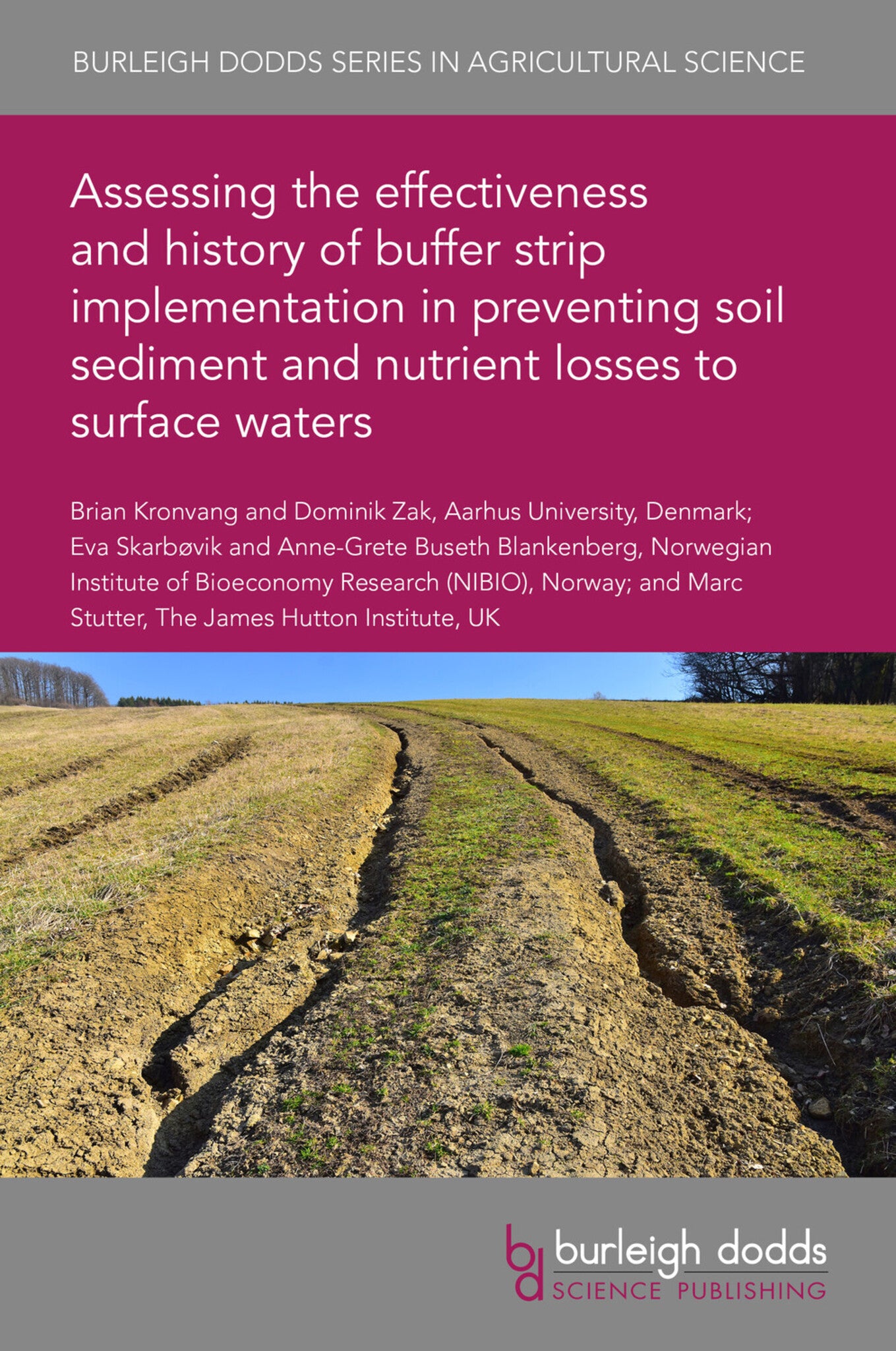We're sorry. An error has occurred
Please cancel or retry.
Assessing the effectiveness and history of buffer strip implementation in preventing soil sediment and nutrient losses to surface waters

Some error occured while loading the Quick View. Please close the Quick View and try reloading the page.
Couldn't load pickup availability
- Format:
-
21 August 2024

Buffer strips are one of the most widely utilised mitigation measures to reduce sediment and nutrient transfer from soil erosion and surface runoff on fields to neighbouring surface waters. Their effectiveness in terms of retaining sediment and nutrients has been documented by numerous experimental studies, with buffer strip width and soil type the most important factors influencing their performance. A recent review of more than 270 experimental studies on the effectiveness of buffer strips showed an average sediment retention amounting to 72%. Similarly, the average retention for total phosphorus and total nitrogen in buffer strips amounted to 75% and 32%, respectively. Newly developed engineered buffer strips have proven to be increasingly efficient at retaining dissolved nutrients transported via tile drainage water. This chapter looks at the history of buffer strips in countries including Denmark, Scotland and Norway, offering valuable insights in to how to improve the uptake of buffer strips.

TECHNOLOGY & ENGINEERING / Agriculture / Agronomy / Soil Science, Soil science and management, SCIENCE / Global Warming & Climate Change, SCIENCE / Environmental Science, TECHNOLOGY & ENGINEERING / Environmental / General, TECHNOLOGY & ENGINEERING / Agriculture / Sustainable Agriculture, TECHNOLOGY & ENGINEERING / Agriculture / Agronomy / Crop Science, Climate change, Agronomy and crop production, Organic farming

- 1 Introduction
- 2 Effects of buffer strips
- 3 Experiences with buffer strips in Northwest Europe
- 4 Conclusion and future trends
- 5 Acknowledgements
- 6 Where to look for further information
- 7 References



